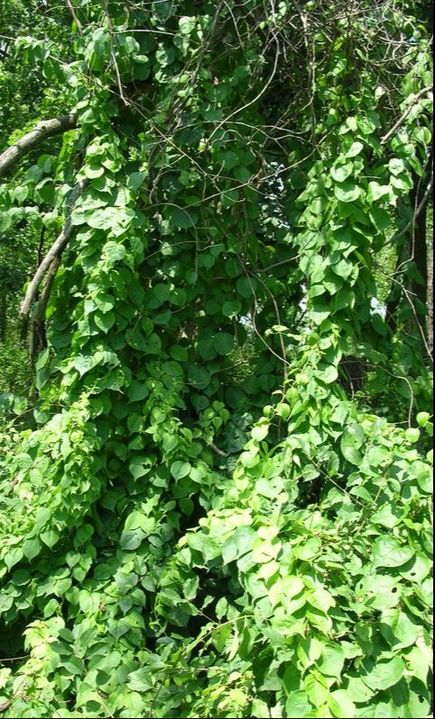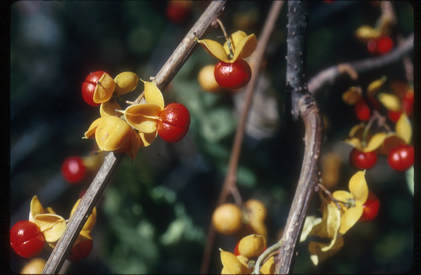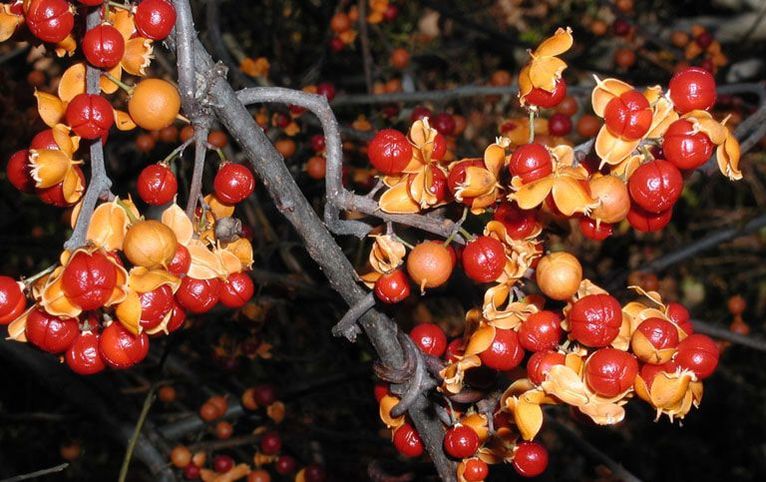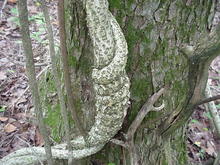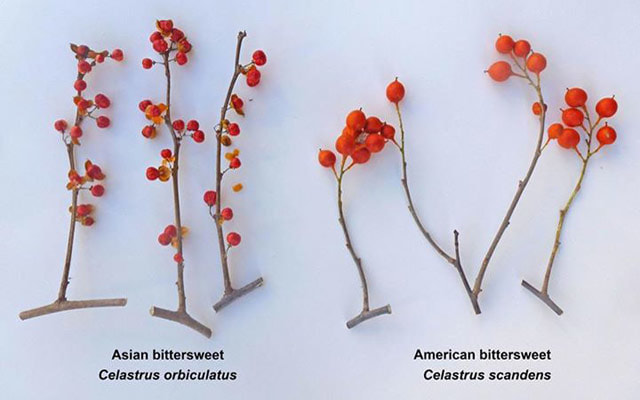|
Asian bittersweet
(Celastrus orbiculatus) Status: scattered invasions throughout Monroe County Description: Woody, deciduous, climbing vine; leaves alternate, ovate to round, abruptly sharp-pointed and glossy; small greenish flowers occur in clusters in the leaf axils; yellow, papery coat surrounding capsule splits to reveal red-orange fruit in leaf axils in fall. American bittersweet (C. scandens) is similar but fruit is reddish, with orange papery coats, and in terminal clusters, not in leaf axils. Threat: Asian bittersweet climbs up and overtops trees, making them more vulnerable to windthrow; twining stems girdle or kill trees; hybridizes with native bittersweet, with the hybrids out-competing the native species. |
Asian Bittersweet
|
Video on Asian Bittersweet
Click here for an educational video on Asian Bittersweet from Purdue University Extension.
|
Native or Invasive Bittersweet?
Learn how to tell the difference between the native American bittersweet and the invasive Asian bittersweet.
|
